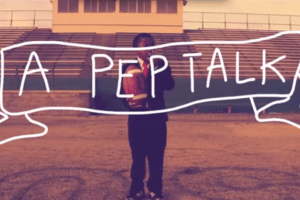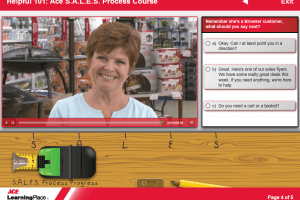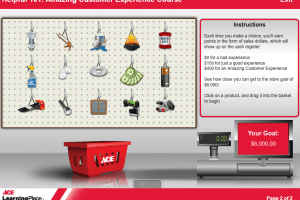Begin with this premise:
Video is one of many assets available to instructional designers.
By 2018, per Cisco Systems, 84% of internet traffic will be video content. What does this mean for training professionals? We need to establish a training video lexicon. It is a proven fact that a firm grasp of word meanings is a strong predictor of successful writing. That being said, designers and clients that share a common language will be more effective and efficient in satisfying business objectives. Furthermore, choosing the type of videos for your eLearning course should be based on your learning objectives.
5 Categories of Training Videos
Training videos can be grouped into five categories:
1. Communication
2. Motivation
3. Knowledge
4. Hard Skills
5. Soft Skills
Communication
A communication video features a talking head with accompanying b-roll and graphic text elements to support what the speaker is saying. B-roll is a video term that means imagery, moving or still, that supports the music or narrative. A common example is where an executive addresses the camera directly in order to communicate information related to a new corporate initiative or culture change. Using video provides credibility and supports the training objectives.
Motivation
This video is wide open in its style. There really is no formula. A Pep Talk from Kid President to You is the perfect example. It’s creative, humorous and features a truly lovable character that guides the message and implores the audience to take action. Used properly, a motivational video can be used to launch a meeting, introduce a curriculum, or ultimately compel an audience to act.
Knowledge or Awareness
A knowledge video typically conveys information for the purpose of comprehension and retention. It does not teach a skill or change behavior. A perfect example is a product knowledge video that makes sales people aware of its features and benefits. Here is an example that Cinecraft produced for Diebold Premier Services. Another form of a knowledge or awareness video is a safety or compliance video. While the content may be dry, the purpose is very clear: this is information you need to know.
Hard Skills
How-to is a type of hard skill video. There may be knowledge or awareness contained in it, but its purpose is to teach the viewer how to perform a task. The end result is changed behavior. Cinecraft’s How to Build a Cedar Raised Garden Kit video demonstrates exactly how to assemble this product. After watching it, the viewer should be able to open the box and build a cedar raised garden bed. These videos provide visuals for the learner, while the narrator explains the step-by-step details. Moving text graphics are often used to reinforce the key points.
Soft Skills
This popular category includes behavioral modeling scenarios that can either be viewed passively or broken up into learning simulations.Behavioral modeling scenarios tell a story by demonstrating real life social interactions and behaviors. Taken a step further, they can help change behavior by providing a first- or third-person viewpoint by asking the learner questions to move the story along, like a choose your own adventure book. A first-person point-of-view video places the viewer in the driver seat. In this retail sales training simulation, the learner watches a customer in the video. They are then presented with choices. Based on the learner’s decision, the customer “reacts,” simulating a real-life sales interaction. By using this type of video in an eLearning course, you can check the learner’s comprehension and ensure there is a transfer of knowledge that will lead to a change in behavior.
In a third-person POV simulation, an actor demonstrates a skill or behavior, and the learner has to make decisions that will affect the actor in the video. The simulation is still present – it’s simply a matter of watching the actor and choosing what they do next, as opposed to the learner being the actor. Here is an example of a third-person point-of-view video turned into a game. This example allows the learner to differentiate between correct and incorrect customer service behaviors.
The type of video you choose should match the learning objectives. For instance if the learning objective is, demonstrate asking open ended questions with customers ("How can I help you today?" as opposed to "Can I help you?"), a behavioral modeling video with questions asking the learner to choose a path is ideal. Doing this will ensure that you meet your business objectives, and remember that is why you are building the course in the first place.







![Top 20 eLearning Statistics For 2019 You Need To Know [Infographic]](https://cdn.elearningindustry.com/wp-content/uploads/2019/08/top-20-elearning-statistics-2019-need-know.png)






